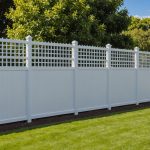Preserving your garden's bounty is not just about reducing waste; it’s also an opportunity to enhance your culinary creations. A solar dehydrator is an eco-friendly solution that harnesses the power of the sun to dry fruits, vegetables, and herbs, enriching your pantry with concentrated flavors. This guide will walk you through crafting your own solar dehydrator, making it accessible and fun. Explore how to turn your UK garden harvest into deliciously preserved treats while embracing sustainability. Let’s get started!
Understanding Solar Dehydration
Solar dehydration is a sustainable method of food preservation that harnesses the sun's energy. This technique has been utilised for centuries, offering an eco-friendly way to extend the shelf life of fruits, vegetables, and herbs. By removing moisture, solar dehydration inhibits the growth of bacteria and mould, ensuring that food remains safe for consumption over extended periods.
Avez-vous vu cela : Can You Keep Chickens in a UK City Garden Without Disturbing Neighbors?
Historically, food preservation methods like salting, smoking, and drying have been essential for survival, especially in regions with harsh climates. Among these, solar dehydration stands out for its simplicity and effectiveness. Traditional societies often used this method to store seasonal produce, ensuring a steady food supply throughout the year.
In the context of sustainable gardening, solar dehydration plays a crucial role. It allows gardeners to preserve their harvest without relying on electricity or other non-renewable resources. This not only reduces the carbon footprint but also supports the principles of permaculture by promoting self-sufficiency and resourcefulness.
Dans le meme genre : Expert Guide: Selecting Safe and Long-Lasting Playground Equipment for Your UK Garden
For those keen on embracing eco-friendly practices, solar dehydration offers a practical solution. By integrating this method into gardening routines, individuals can contribute to a more sustainable future while enjoying the benefits of preserved, nutritious food.
Materials Needed for Your Solar Dehydrator
Creating a solar dehydrator at home is an engaging project that aligns with sustainable practices. To begin, gather the necessary construction supplies and DIY tools. Essential materials include:
- Wood: Opt for untreated, sustainable wood to build the frame.
- Glass or Clear Plastic: Use these for the top cover to allow sunlight to penetrate.
- Mesh or Screen: This is crucial for supporting the food while allowing airflow.
- Insulation: Eco-friendly options like wool or recycled materials work well.
For DIY tools, a saw, hammer, and screwdriver are fundamental. A tape measure ensures precision, while a drill can speed up the construction process. If you're new to DIY, consider borrowing tools to minimise costs.
Sourcing eco-friendly materials is vital for maintaining sustainability. Local hardware stores often carry untreated wood and glass. Alternatively, recycled materials can be found at salvage yards or online marketplaces, reducing your carbon footprint.
By choosing sustainable materials and the right tools, constructing a solar dehydrator becomes not only a practical endeavour but also an environmentally conscious one. Embrace this project to enjoy the benefits of preserved food while contributing to a greener planet.
Step-by-Step Construction Process
Embarking on the DIY journey of building a solar dehydrator is both rewarding and sustainable. With the right construction techniques, you'll have a functional dehydrator in no time.
Preparing the Base
Start by constructing a sturdy base using sustainable wood. This foundation is critical for the stability of your solar dehydrator. Measure and cut the wood to your desired dimensions, ensuring all pieces fit snugly. Secure the base with nails or screws, and check for levelness to avoid any wobbling.
Assembling the Frame
Next, assemble the frame. Use the same untreated wood to create a rectangular structure that will support the top cover. Precision is key here; use a tape measure to ensure all sides are equal. For added durability, reinforce corners with metal brackets. This step is crucial for ensuring the dehydrator withstands outdoor conditions.
Installing the Dehydration Tray
The dehydration tray is where your produce will rest. Use a fine mesh or screen to allow airflow while preventing food from falling through. Attach the tray securely within the frame, leaving enough space between the tray and the top cover for optimal air circulation. Avoid common pitfalls like using too coarse a mesh, which can lead to inefficient drying.
Optimizing Your Solar Dehydrator Design
Enhancing your solar dehydrator design can significantly improve its efficiency. By focusing on solar exposure, airflow, and customization, you can ensure optimal drying conditions for various types of produce.
Maximizing Solar Exposure
Positioning your dehydrator is crucial. Place it in a location with maximum sun exposure throughout the day. An adjustable tilt mechanism can help capture more sunlight, especially during different seasons. Reflective materials, like aluminium foil, can be added to the interior to increase heat retention and efficiency.
Importance of Airflow and Ventilation
Proper airflow and ventilation are essential for effective dehydration. Ensure there are adequate vents at both the top and bottom of the dehydrator. This promotes a continuous flow of air, which is necessary to carry away moisture. Adjustable vents allow you to control airflow, adapting to different weather conditions and produce types.
Custom Features for Different Types of Produce
Customization can enhance the versatility of your dehydrator. Consider removable trays to accommodate varying sizes of produce. For herbs, a finer mesh is ideal, while larger items may require sturdier trays. Implementing these efficiency tips ensures your solar dehydrator is versatile and effective for preserving diverse harvests.
Types of Produce Suitable for Dehydration
When considering dehydration compatibility, it's essential to identify the best produce for drying. Certain fruits and vegetables lend themselves exceptionally well to this preservation method, ensuring both flavour and nutritional value are retained.
Ideal Fruits and Vegetables
Fruits such as apples, bananas, and berries are popular choices due to their high sugar content, which enhances flavour when dried. Vegetables like tomatoes, peppers, and mushrooms also dehydrate well, maintaining their taste and texture. These items are among the best produce for drying because they contain sufficient moisture to be effectively removed, yet retain their essence when dehydrated.
Factors Affecting Dehydration Success
Several factors influence the success of dehydration. The water content in produce plays a significant role; items with lower moisture levels dehydrate more efficiently. Additionally, uniform slicing ensures even drying, preventing spoilage. Temperature and humidity levels should be monitored closely, as they can impact drying times and quality.
Preparation Tips
Preparation is key for successful dehydration. Wash and peel produce as necessary, then slice uniformly. For fruits prone to browning, a brief soak in lemon juice can preserve colour. Blanching certain vegetables before dehydration can enhance texture and flavour, contributing to effective food preservation.
Climate Considerations for the UK
When utilising solar dehydration in the UK, the climate plays a pivotal role in the process's success. The UK's weather, characterised by frequent cloud cover and variable sunlight, impacts the effectiveness of solar dehydration techniques. Understanding these conditions is essential for optimising the dehydration process.
How UK Weather Influences Solar Dehydration
The UK's climate often presents challenges for solar dehydration due to inconsistent sunshine. Cloudy days can slow down the dehydration process, requiring longer drying times for produce. It's crucial to monitor weather forecasts and plan dehydration activities on days with maximum sun exposure.
Best Practices for Sunny Days and Cloudy Conditions
On sunny days, position your dehydrator in a south-facing area to capture the most sunlight. For cloudy conditions, consider using reflective surfaces inside the dehydrator to enhance heat retention. Additionally, ensuring proper ventilation can help maintain airflow, even when sunlight is limited.
Seasonal Adjustments for Effective Dehydration
Seasonal changes necessitate adjustments in dehydration practices. During spring and summer, when sunlight is more abundant, dehydration is typically faster. In autumn and winter, consider using a greenhouse or conservatory to extend drying capabilities. By adapting to the UK's solar dehydration conditions, you can effectively preserve produce year-round.
Safety Tips for Food Preservation
Ensuring food safety during preservation is paramount. Adhering to proper preservation guidelines can prevent health risks and prolong the shelf life of dried produce.
Safe Food Handling Practices
Begin with clean hands and surfaces. Wash produce thoroughly before dehydration to remove dirt and bacteria. Use clean utensils and storage containers to maintain hygiene. Proper handling reduces the risk of contamination, ensuring that preserved foods remain safe.
Monitoring Moisture Levels
Controlling moisture levels is crucial in food preservation. Use a moisture meter to ensure produce is sufficiently dried. Inadequate drying can lead to mould growth and spoilage. Aim for even moisture removal by slicing produce uniformly and rotating trays during dehydration.
Recognizing Signs of Spoilage
Being able to identify spoilage is vital for maintaining health considerations. Look for signs such as unusual odours, changes in colour, or the presence of mould. Discard any spoiled items immediately to prevent contamination of other stored produce. Regularly inspect stored foods for these indicators to ensure safety and quality.
Troubleshooting Common Issues
When using a solar dehydrator, you may encounter common problems that can affect its efficiency. Understanding these issues and their solutions is essential for successful food preservation.
Identifying and Resolving Airflow Issues
Airflow is crucial for effective dehydration. If you notice uneven drying, check for blockages in the vents or mesh screen. Ensure that there is ample space between trays for air circulation. Adjust the position of the dehydrator to face prevailing winds, enhancing natural airflow and promoting even drying.
Managing Inconsistent Drying Times
Inconsistent drying times can be frustrating. This often results from fluctuating sunlight or poor positioning. To mitigate this, regularly rotate trays and reposition the dehydrator for optimal sun exposure. Monitor weather forecasts and plan dehydration on sunny days. Using reflective materials can also help maintain consistent temperatures inside the dehydrator.
Tips for Avoiding Mold and Spoilage
Mold and spoilage are common problems if moisture levels remain too high. Ensure produce is sliced uniformly and check for complete dryness before storage. A moisture meter can be a valuable tool in this process. Additionally, avoid overcrowding trays, as this can trap moisture and lead to spoilage.
Visual Aids and Resources
Incorporating visual aids into your solar dehydrator project can significantly enhance understanding and accuracy. Diagrams for solar dehydrators serve as essential tools, providing a clear blueprint of the construction process. These visual guides help clarify complex steps, ensuring that each component is assembled correctly and efficiently.
Recommended Diagrams and Photos
Utilising detailed diagrams and photos can prevent common construction errors. Look for resources that offer step-by-step illustrations, highlighting key areas such as base assembly and tray installation. Photos of completed dehydrators can also inspire design enhancements and customisations, aiding in the creation of a more efficient unit.
Additional Educational Resources
To deepen your knowledge of food preservation, explore educational resources that cover the science and techniques behind solar dehydration. Books, online courses, and community workshops provide valuable insights and practical tips. These resources can expand your understanding of preservation methods, ensuring you maximise the benefits of your solar dehydrator. Embracing these aids not only simplifies the building process but also enriches your overall learning experience.
Community Engagement and Sharing Results
Engaging with the gardening community can significantly enhance your solar dehydration journey. Sharing experiences and tips not only enriches personal knowledge but also fosters a collaborative environment where everyone can benefit.
Encouraging Sharing of Experiences and Tips
One of the best ways to learn and improve is by sharing success stories and challenges with fellow gardeners. By doing so, you contribute to a collective pool of knowledge. Sharing tips on solar dehydration techniques, such as optimal drying times or innovative design tweaks, can lead to improved practices and greater efficiency.
Platforms for Connecting with Other Sustainable Gardeners
Numerous platforms are available for connecting with like-minded individuals. Online forums, social media groups, and local gardening clubs offer spaces for exchanging ideas and experiences. These platforms provide opportunities for real-time feedback and support, enhancing your solar dehydration efforts.
Benefits of Community Feedback on Dehydration Techniques
Receiving feedback from the gardening community can be invaluable. Constructive criticism and suggestions can help refine your techniques, leading to better results. Collaborative problem-solving within the community often results in innovative solutions that might not have been considered individually. Engaging with others ensures continuous learning and improvement in your solar dehydration practices.











